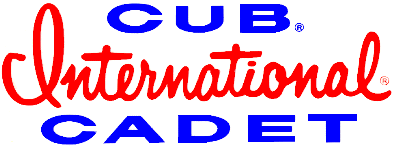sblunier
Well-known member
- Joined
- Aug 4, 2006
- Messages
- 4,829
- displayname
- Steve Blunier "Mr. Plow" (Central IL)
Tristan & Donald,
Plowing depth is controlled mostly by the plow adjustment. The lower mounting holes will not automatically increase depth, but may help to align the plow's line of draft with the hitching point.
It is very difficult to run any Brinly plow (with no weight on it) with a truly "flat" landside...they will tend to ride up over the furrow floor at the heel some, but it shouldn't be excessive in normal soil.......heavy sod is not normal soil.
Flatten the plow out a bit more, shooting for about 6" of depth (with the wheels in the furrow on the second pass) and then increase your speed. Plows are technically designed to plow a depth equal to ~1/2 the width of cut, so slowing down to plow extra deep may be impeding your ability to roll sod over. FWIW, a true and consistent 8" of depth with any Brinly (including a 12" bottom) is a real feat, and generally isn't the standard....6" is much more common and realistic....(no comments here guys...


 )
)
All sod plowing with a Brinly is a compromise. Brinly bottoms are designed as "stubble bottoms" with high boards and tall vertical waste edges. They are intended for plowing typical garden soil with no top cover to hold the soil in a ribbon. True sod bottoms (often seen on older 1 and 2 bottom tractor plows) have short moldboards with very long wings and shallow angles on the waste edge. They also tend to have much more "cup" at the end of the board (some even have moldboard extensions to firmly place sod). These features insure that sod ribbons go over and stay over. In short, we are asking a lot out of Brinly bottoms if we want them to plow sod well.
I will post some pics that may help....
Plowing depth is controlled mostly by the plow adjustment. The lower mounting holes will not automatically increase depth, but may help to align the plow's line of draft with the hitching point.
It is very difficult to run any Brinly plow (with no weight on it) with a truly "flat" landside...they will tend to ride up over the furrow floor at the heel some, but it shouldn't be excessive in normal soil.......heavy sod is not normal soil.
Flatten the plow out a bit more, shooting for about 6" of depth (with the wheels in the furrow on the second pass) and then increase your speed. Plows are technically designed to plow a depth equal to ~1/2 the width of cut, so slowing down to plow extra deep may be impeding your ability to roll sod over. FWIW, a true and consistent 8" of depth with any Brinly (including a 12" bottom) is a real feat, and generally isn't the standard....6" is much more common and realistic....(no comments here guys...
All sod plowing with a Brinly is a compromise. Brinly bottoms are designed as "stubble bottoms" with high boards and tall vertical waste edges. They are intended for plowing typical garden soil with no top cover to hold the soil in a ribbon. True sod bottoms (often seen on older 1 and 2 bottom tractor plows) have short moldboards with very long wings and shallow angles on the waste edge. They also tend to have much more "cup" at the end of the board (some even have moldboard extensions to firmly place sod). These features insure that sod ribbons go over and stay over. In short, we are asking a lot out of Brinly bottoms if we want them to plow sod well.
I will post some pics that may help....

























































